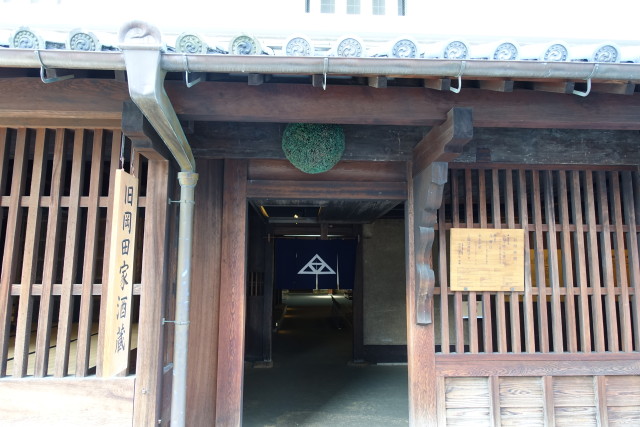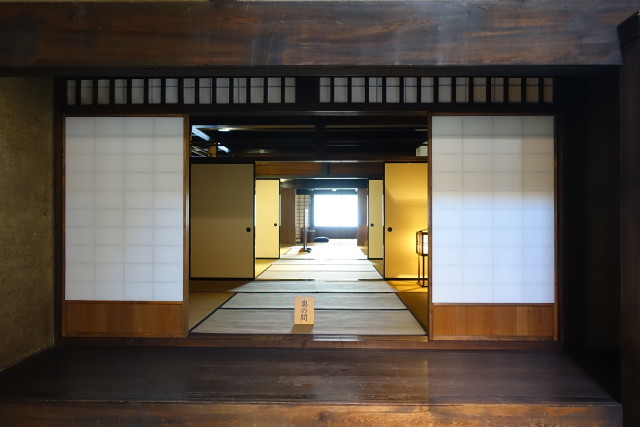Going south from the Inano shrine for about 5 minutes, you can find “Miyanomae Bunka no Sato.” This place is a comprehensive cultural facility including an art museum, a craft museum, and a haiku and haiga museum, in which you can learn the history and culture of Itami. In particular, the haiku and haiga museum, “Kakimori Bunko,” is famous, and has many important works concerning haiku and haiga.
This is a very handsome Japanese garden in the facility.
In this facility, two old town houses, built in the Edo period, are preserved and published. First, I visited “Kyu Ishibasi-ke Jutaku” (Ishibashi house). This building is a dwelling with shop of a trader in general goods.
This is a front view of the house.
Diagrams of the Ishibashi house, the left view is the first floor and the right view is the second floor.
The following photo is the back side of the house.
Entering the entrance, there is a dirt floor. The roof from the dirt floor.
A rest area on the dirt floor.
Rooms on the first floor looking from the dirt floor.
You can enter the rooms on the first floor, and this photo is of the dirt floor looking from the tatami room. Furniture in the room is very old, and may be those used by people during the Edo period.
The furniture behind Andon (Japanese paper-framed lamp) is a “Hako-kaidan” (box-stacked stairs), which was often seen in old town houses, but is not seen these days.
The second floor is an exhibition room. Crossbeams of the ceiling and windows remain since this house was built in the Edo period.
There is “Okada Sake Brewery” (Okada house) next to the Ishibashi house. This building is an old town house built in 1674, which is the oldest in Japan as a sake brewery whose building date is firmly established.
A diagram of the Okada house.
Sake barrels were stacked on the dirt floor.
Some Japanese tatami rooms including a store place form a line along the dirt floor.
Behind the Japanese tatami rooms, there is a working place where sake was made during the Edo period. On the floor of the working place, there is a Kamaya (place on which caldrons are set), an Araiba (washing space), and a well. Tools used for making sake during the Edo period are exhibited.
These are the caldrons.
Tools used for making sake in the Araiba (washing space) are to the left of the well.
The sakegura (storehouse of sake) is now a multipurpose hall having lighting and sound facilities.
These are sake squeezing or pressing devices.
Next, I went to “Shirayuki Choju Kura.” The building utilizes an old sakegura (storehouse of sake), in which the first floor is a restaurant and the second floor is a museum.
The appearance is the same as that of the building built in the Edo period.

These are exhibits in the museum. They are tools used for making sake during the Edo period.
The crossbeams shown below remain from the Edo period.
This is a ruin of a castle (Arioka castle) near the JR Itami station.
Red leaves and yellow leaves in the park.
On that day, it was fine and warm in the morning, but the wind suddenly became strong in the afternoon, and it started to rain, and the temperature fell rapidly.
The Itami City is famous for an airport and a rose garden, but the walking around the town is also quite interesting. Please visit Itami, if you have time.



































Leave a Reply